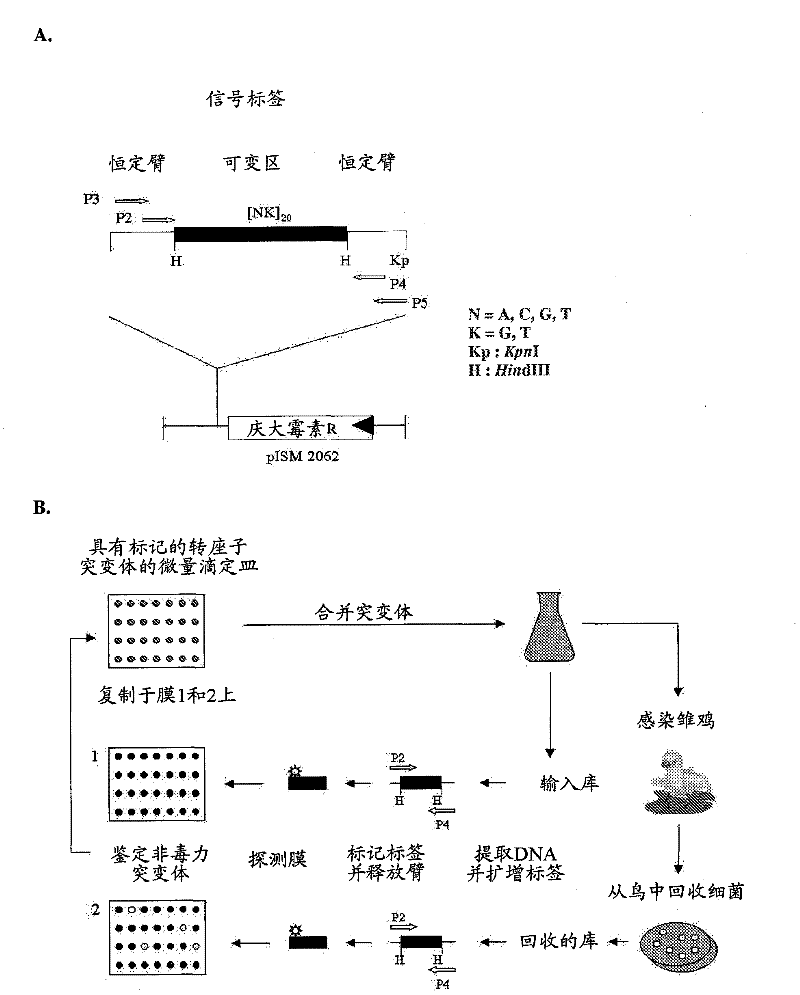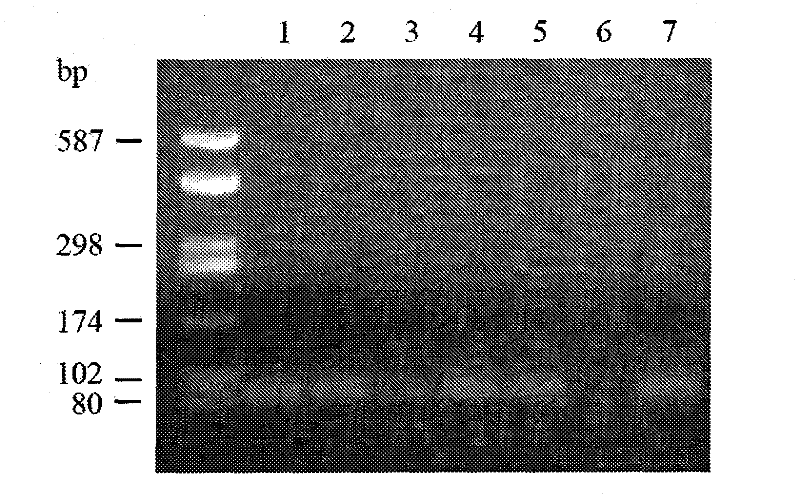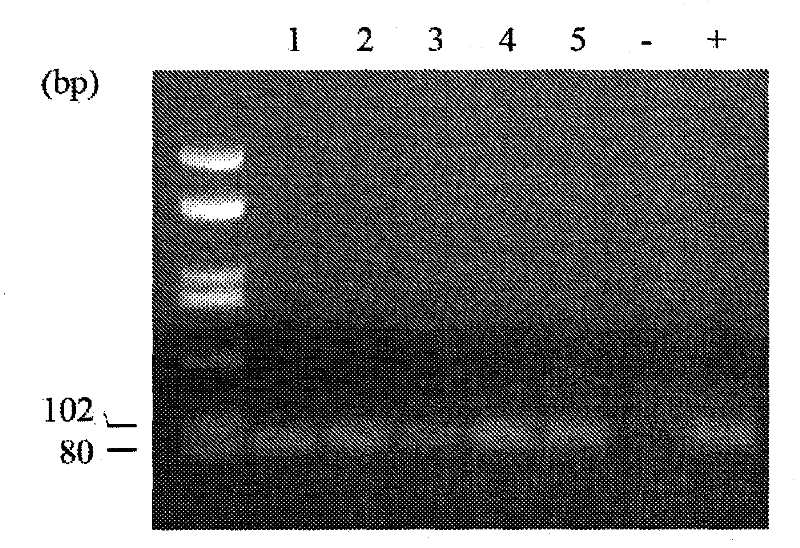Live attenuated vaccines
A vaccine composition and immunogenicity technology, applied in the direction of antiviral agents, bacterial antigen components, antibody medical components, etc., can solve the problems of insignificant attenuation effect and difficult prediction
- Summary
- Abstract
- Description
- Claims
- Application Information
AI Technical Summary
Problems solved by technology
Method used
Image
Examples
Embodiment 1
[0099] Example 1: Creation and Identification of Mycoplasma Gallisepticum Mutant Library
[0100] Signal tagged mutagenesis (STM) was used to generate and characterize a library of M. gallisepticum mutants. STM policies are shown in figure 1 middle. A unique DNA tag is incorporated into the transposon used to transform the pathogen, allowing the random insertion of the signal tag into the genome. Occasionally, the signal label ( figure 1 A) It can be integrated into the gene and inactivated to generate insertion mutations. Libraries of ST mutants are then screened in appropriate animal models using a negative selection process. The input pool was compared to the ST mutants recovered from the animals using PCR amplification of individual tags followed by hybridization. This technique identifies individual mutants that were present in the input pool (pre-screen) but lost in pools recovered after passage of individual animals ( figure 1 B). These lost mutants most likely c...
Embodiment 2
[0163] Example 2: In vivo analysis of M. gallisepticum ST mutants
[0164] introduce
[0165] The STM technique consists of two main steps: in vitro generation of tagged mutant libraries and in vivo negative selection in animals. Using the improved hybridization detection system described in Example 1 above, the input library contains only mutants derived from tags that do not cross-hybridize with each other and that also give clear detection signals. The ST mutant library of Example 1 was generated using 37 different marker transposons. This example describes the use of negative selection of infected chicks to screen 102 ST mutants containing 34 different signatures to identify genes associated with virulence or necessary for survival in vivo.
[0166] Materials and methods
[0167] Determination of insertion sites for ST mutants
[0168] Genomic DNA from each ST mutant was directly sequenced using specific primers (Table 2). For those ST mutants for which sequence data ...
Embodiment 3
[0214] Example 3: Infectivity and virulence of selected M. gallisepticum ST mutants
[0215] Preparation of ST mutants
[0216] Two ST mutants 04-1 and 33-1 that were not detected in the primary screening or confirmatory screening experiments and 5 mutants that were rarely detected (ST mutants 03, 18, 20, 22 and 26) Culture in MB supplemented with 160 [mu]g / ml gentamicin at 37[deg.]C until late logarithmic. Wild-type Ap3AS was cultured at 37°C in MB without gentamicin. Adjust the concentration of each strain to about 1 × 10 7 CCU / ml.
[0217] Virulence and infectivity analysis
[0218] experimental design
[0219] Eight groups (20 birds each) of 4-week-old SPF chicks were individually housed in positive-pressure fiberglass isolators. Each of the 6 groups was inoculated with a different ST mutant by aerosol exposure. Negative control birds were exposed to MB and positive control birds were exposed to wild type Ap3AS. Birds were euthanized 14 days after infection and pos...
PUM
 Login to View More
Login to View More Abstract
Description
Claims
Application Information
 Login to View More
Login to View More - R&D
- Intellectual Property
- Life Sciences
- Materials
- Tech Scout
- Unparalleled Data Quality
- Higher Quality Content
- 60% Fewer Hallucinations
Browse by: Latest US Patents, China's latest patents, Technical Efficacy Thesaurus, Application Domain, Technology Topic, Popular Technical Reports.
© 2025 PatSnap. All rights reserved.Legal|Privacy policy|Modern Slavery Act Transparency Statement|Sitemap|About US| Contact US: help@patsnap.com



